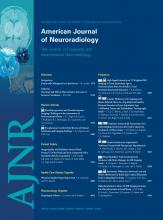We appreciate Dr Bergui's comments concerning our recent article in which we questioned the safety of intracranial stent placement. Neither the Wingspan system (WS) (Boston Scientific, Natick, Massachusetts) nor the balloon-mounted stent arm compared favorably with the natural history of the disease as shown by the Warfarin-Aspirin Symptomatic Intracranial Disease study.1 The angioplasty arm, however, did.
Dr Bergui raised a few legitimate questions that we would like to address here. He first questioned the higher dissection rate in the WS arm because angioplasty is the more dangerous part of the procedure in terms of dissection. We think the explanation for this phenomenon is that less time was spent performing angioplasty (30 seconds on average) before placing the stent, which gives the operator a false sense of security. On the other hand, when angioplasty was performed alone, especially before the availability of a self-expandable stent, strict care was observed to avoid dissection because if faced with dissection, there was no sure way of protecting the vessel from occlusion, making the possibility of massive stroke very real. Therefore, angioplasty was performed with a very slow inflation technique (3–4 minutes were typical).
Concerning the second question, whether WS was used if significant dissection was encountered following angioplasty, we confirm that this was not the case. We stated clearly, in the “Vessel Treated” and “Device Used” sections of the article, that by the introduction of the WS in November 2005, angioplasty was entirely replaced by the WS and we did not perform a primary angioplasty after that time. We did observe our initial plan about the intended procedure, and all complications were assigned the initial procedure intended.
We are comfortable with our results, and the recent publication of the Stenting and Aggressive Medical Management for Preventing Recurrent stroke in Intracranial Stenosis (SAMMPRIS) study2 vindicated our results and our early doubt of the SAMMPRIS study design and usefulness. It is disheartening to see that we needed to perform such an expensive study to prove something a lot of people in the field knew already.
- © 2011 by American Journal of Neuroradiology







